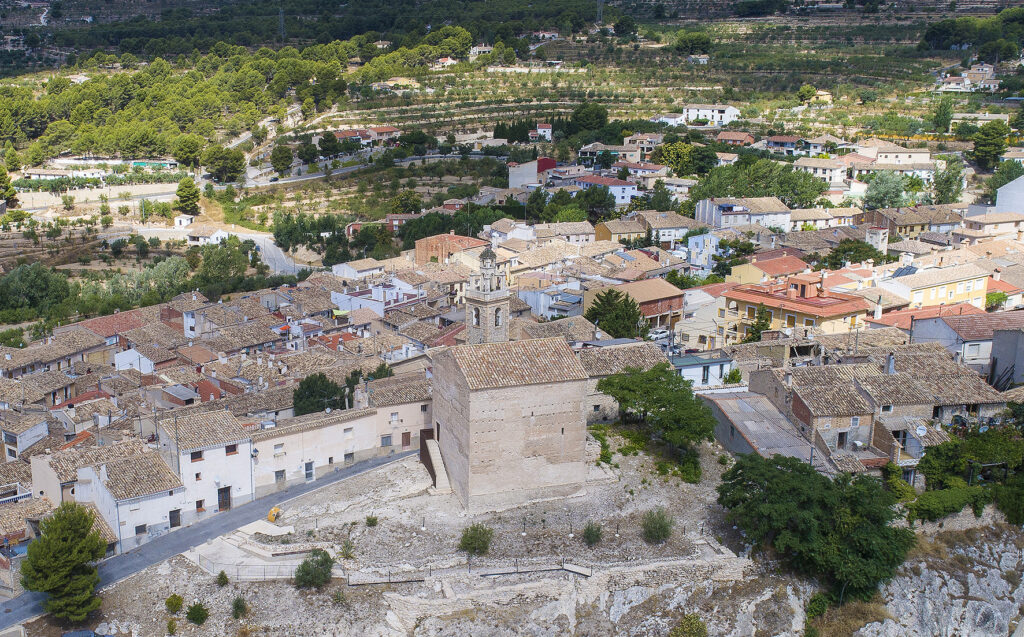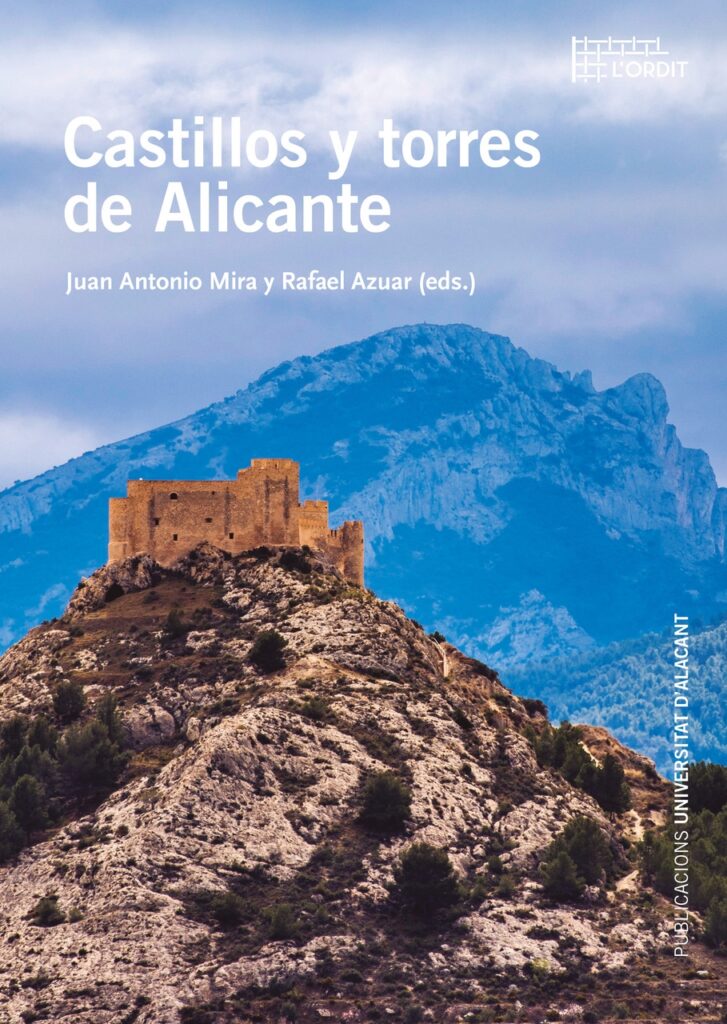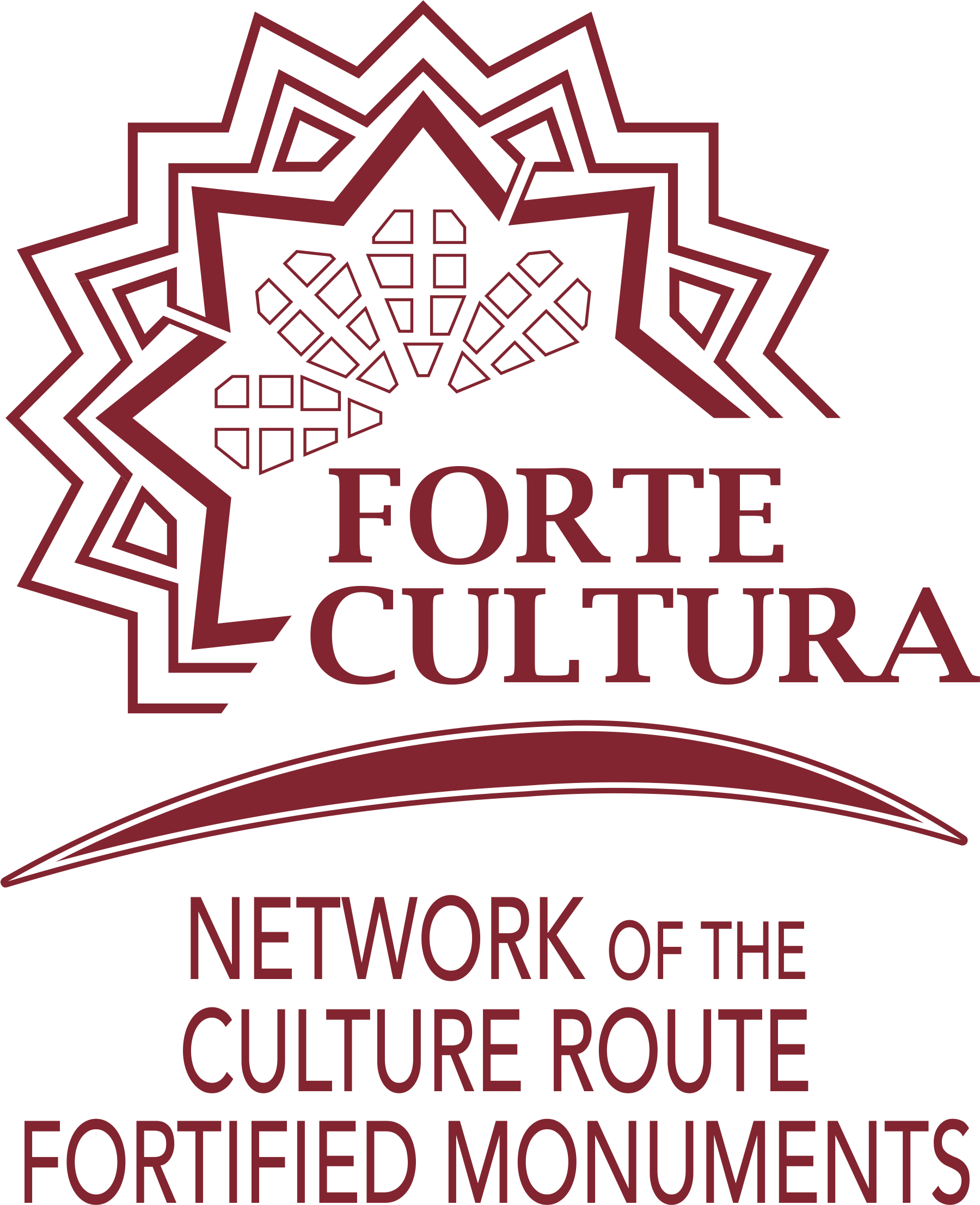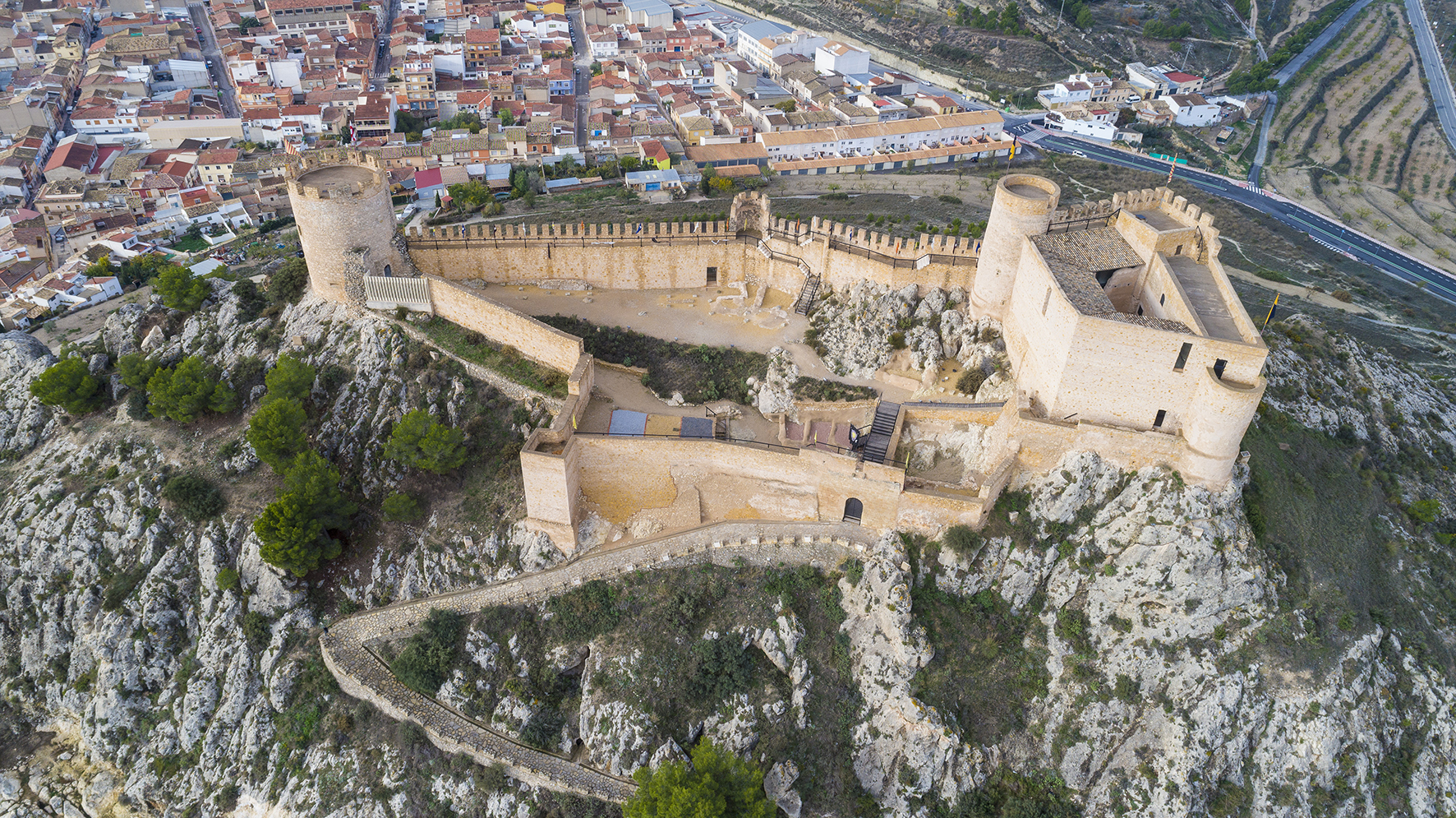Castalla Castle (11th-16th centuries). Photo: Manuel Vicedo.
Authors: Juan Antonio Mira Rico, Rafael Azuar Ruiz
The historical dynamics of the Alicante region between the 11th and 15th centuries resulted in the proliferation of castles and towers in the mountains. This period was characterised by the region’s status as a contested territory with evolving borders, initially belonging to Šarq Al-Andalus and subsequently to the crowns of Aragon and Castile.
Castles and towers represent a fundamental element in the characterisation of the Alicante territory, constituting a pivotal landmark in comprehending its cultural landscape, history, cultural heritage, and tourist dynamics, extending from north to south and from the coast to the inland. Nevertheless, following the loss of their military function, these forts did not escape the fate of being left to fall into ruin. This process of abandonment would continue for centuries. It was not until the second half of the 20th century that their enormous heritage value began to be recognised, and in recent years, many of them have been restored and adapted for visitors. Indeed, there have been instances of these structures being repurposed for diverse use, including but not limited to exhibition spaces. This has resulted in the formation of a unique heritage site of significant interest, which, with adequate planning and the integration of novel technologies, has the potential to evolve into a pivotal economic and tourist hub.
It is therefore unsurprising that a plethora of publications have emerged focusing on defensive architecture in general and castles and towers in particular. These publications have served to raise awareness of the history and architecture of the structures, and, to a lesser extent, the conservation and restoration work carried out on them.
Castillos y torres de Alicante (Castles and Towers of Alicante) has, as would be anticipated, dissemination in its DNA. The present work, published in Spanish and Valenciano, continues in the informative vein of previous studies, but also presents significant differences. In this sense, the work is not merely an archaeological, architectural or historical dissemination, but rather a heritage dissemination that seeks to go beyond the conventional archaeological, architectural and historical approaches, with the aim of being useful to those interested. Consequently, the book’s primary focus is on medieval fortifications and towers that meet the criteria for being visited. In summary, the structures are generally well preserved, their visiting hours are consistent, and they are equipped with various heritage facilities that support the study of their history and architecture, as well as their heritage value. In this regard, buildings that do not meet the above criteria, no longer exist, or are not of medieval origin—such as watchtowers or garden towers—have been excluded.

The fundamental information on medieval castles and towers, carefully organised by region to facilitate visits, forms the core of this publication. Additionally, chapters by various contributors cover their geography, architectural and historical characteristics, cultural management, potential uses of IT, and their cultural and tourist significance. Integrating these perspectives is essential for providing a comprehensive, interdisciplinary overview—an approach that goes beyond traditional archaeological, architectural, and historical analyses.
This method helps address longstanding questions embedded in the local traditions of castles and towers, including the identity of their builders, the reasons behind their construction, the purposes of these structures, and the periods during which they were used. It is also crucial to determine the proprietors and current ownership structures.
Moreover, a compendium of fact sheets has been compiled, offering detailed information on the existing fortifications and towers. These fact sheets have been regularly updated to support visit planning and deepen understanding of these cultural artefacts. These structures, as vestiges of our past, hold the promise of a meaningful future.
Link to the book in Spanish: https://publicaciones.ua.es/ca/libro/castillos-y-torres-de-alicante_158855/
Link to the book in Valencian: https://publicaciones.ua.es/ca/libro/castells-i-torres-d-alacant_158849/



Leave a Reply